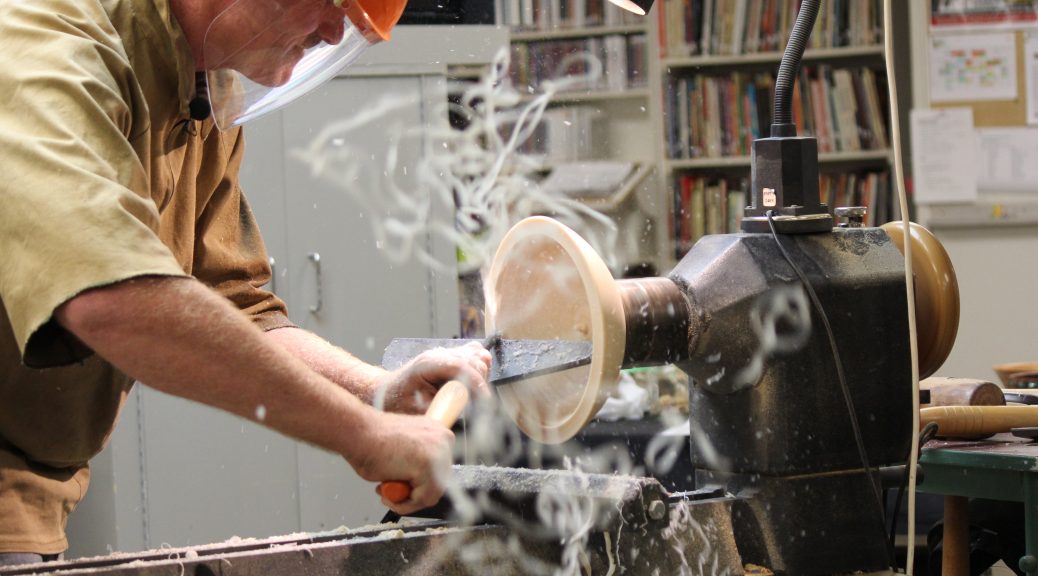Club Meeting:13 March 2019
Report: Garry Jones
Richard began by showing us all some of the wet turned bowls he had done over the last 4-5 years. He pointed out how he had left the spigots on them and also showed us the second spigot on the inside and explained that it was there in case the one on the bottom had moved too much.
He pointed out some of the reasons the wet turned bowls had cracked and had heaps of examples to show us along with a very entertaining commentary on each of the bowls
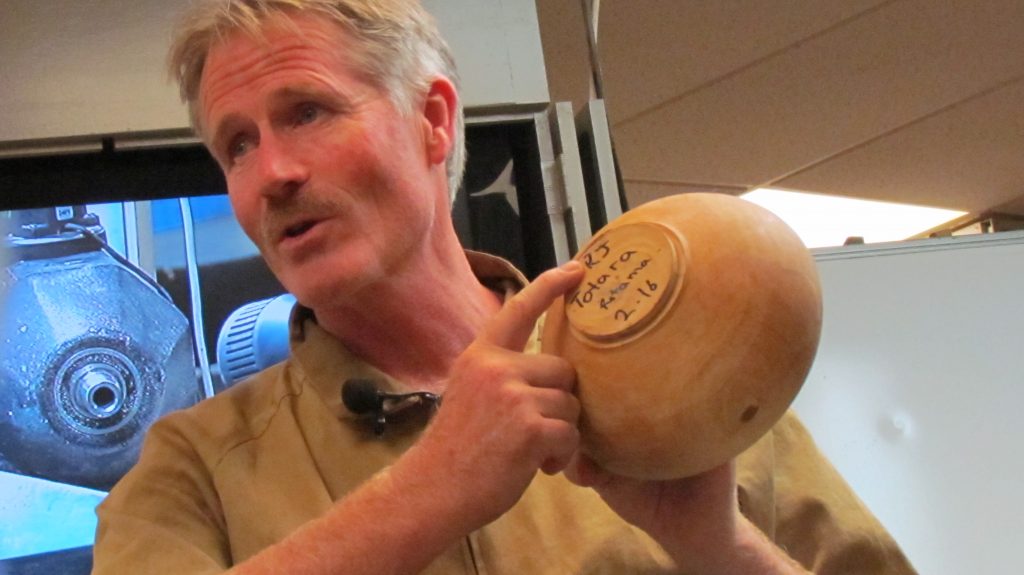
Some good questions came from the audience and Richard gave very knowledgeable answers and explanations that everyone could understand
He explained to us why wet turned bowls should be packed in their own shavings and into a paper bag rather than a plastic one that would make the wood go moldy
He also went through a quick explanation of where and how you should cut up a log to get the best quality wood for your bowl
From here he went to the blank of wet wood (liquid amber) that he had and demonstrated attaching a small face plate ready for turning
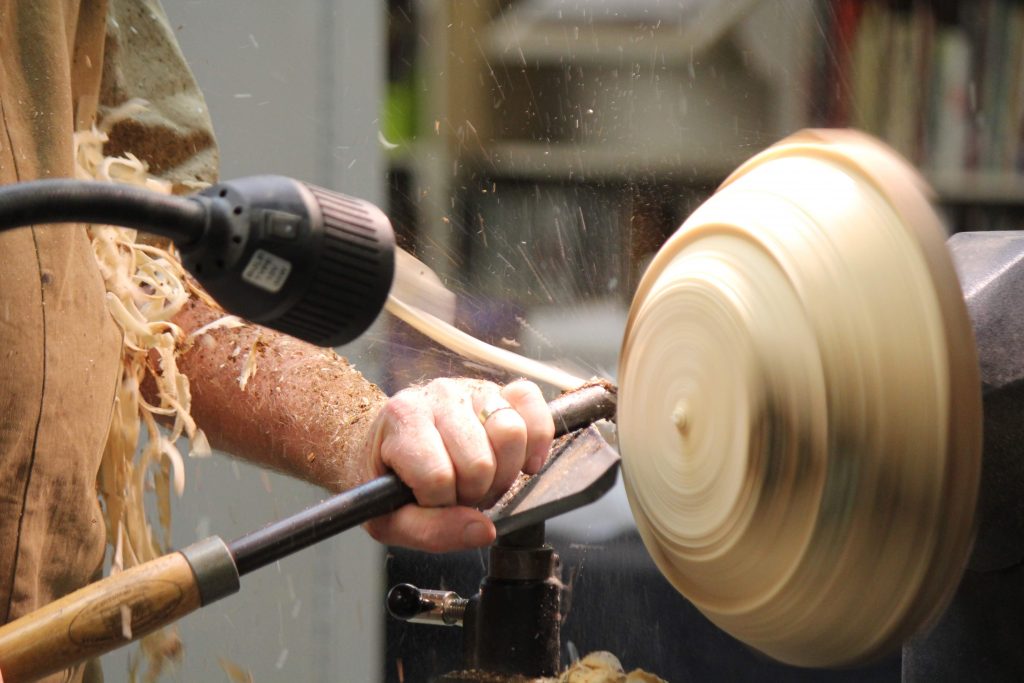
He turned the blank to shape and turned a spigot on the bottom to the required size, it was great to watch the shavings flying off the chisel and into the second row, the wood was really wet so the guys in the front row got an unwanted shower
Richard explained that you can turn the blank to the final shape if you want but that this was not necessary, again he had shavings flying off the chisel and into the audience in a well controlled demo of good tool technique, once the piece was shaped on the bottom he took it off the lathe and removed the face plate in preparation for turning the inside
Richard talked about the shape of the inside and the reasons for having a nice smooth sweeping curve, mainly for ease of sanding and finishing
He gave a good explanation of why he turns the 2 spigots, one on the bottom and one on the inside to the audience as an answer to some great questions
He demonstrated using the parting tool to make a grove on the inside so that the tool doesn’t slip when you start to hollow and also explained that the normal wall thickness for wet turning this size bowl would be a round 20-25mm
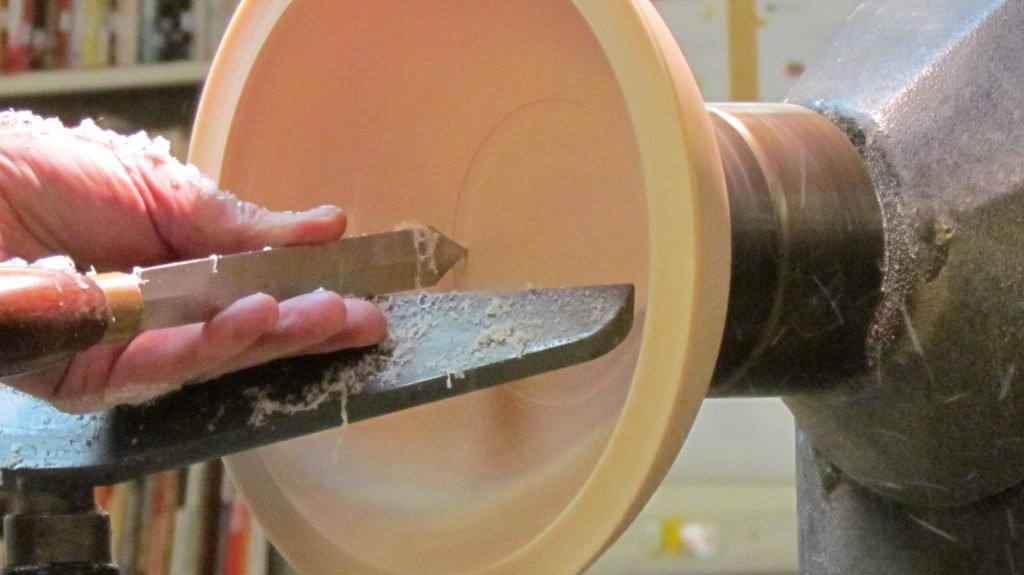
The internal spigot was then turned with about a 2-3mm recess just enough to give the chuck a hold for remounting, he also mentioned that with an internal spigot you need to have enough room for the chuck and be able to use the chuck key
Some other great options and discussions on remounting were also given from the audience
Richard then coated the outside and a small portion of the inside of the bowl with a wax solution to retard the drying process and ultimately the movement of the wood
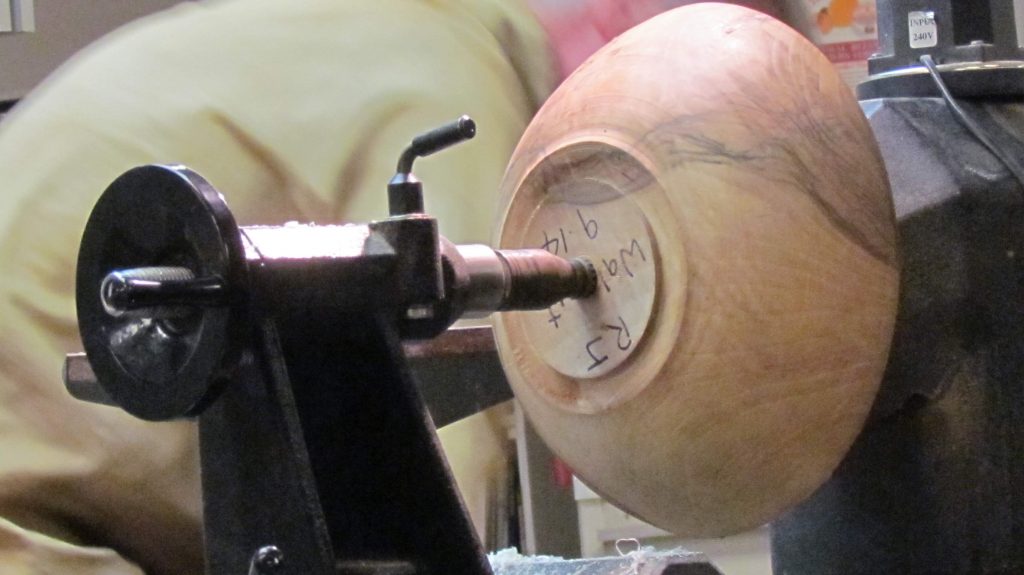
Richard then remounted a walnut bowl that had been turned back in 2014 to demonstrate the techniques discussed in the audience. The spigot was returned to the required size using a draw cut and the bowl was ready to be returned to the desired shape
A very entertaining and informative demo by Richard that created lots of questions and discussion from the audience
Thanks Richard
